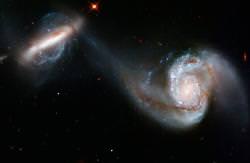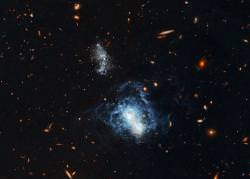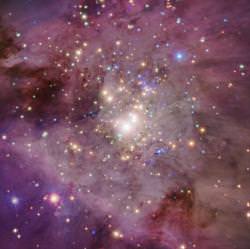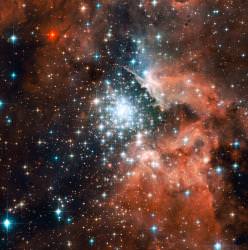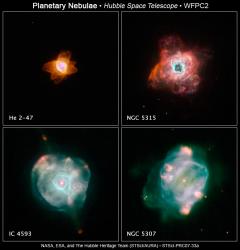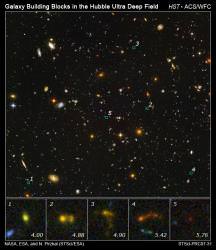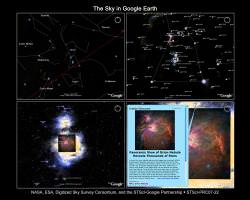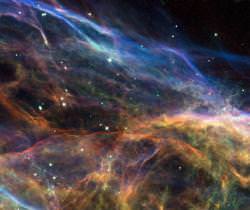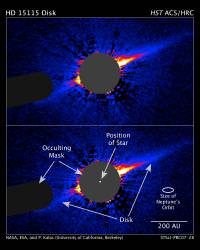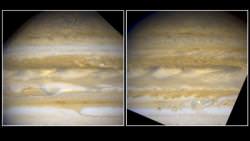Ahh, another beautiful photograph captured by the Hubble Space Telescope. This time we’re looking at two big, beautiful spiral galaxies… tearing each other apart. The large, face-on spiral is NGC 3808, while its dueling partner is the smaller, edge-on NGC 3808A. And between the two is a long today tail of stars, gas and dust, transferring from one to the other.
The two galaxies are collectively known as Arp 87; just one of the hundreds of interacting galaxies seen by astronomers. It was cataloged by the famous Halton Arp in the 1960’s, who maintained his Atlas of Peculiar Galaxies. And this collision is plenty peculiar, thanks to Hubble’s optics and resolution of fine details.
A stream of gas, stars and dust is flowing from NGC 3808 to its companion, enveloping it in a starry embrace. Because the NGC 3808A is seen nearly edge-on, you can make out the twisting trail of stars wrapping around it. Both galaxies have been distorted by their gravitational interaction.
When galaxies interact, stars are born. And this is the case for Arp 87. The colour of the stars and the intensity of heated interstellar dust show that both galaxies are undergoing furious rates of star formation.
Original Source: Hubble News Release

